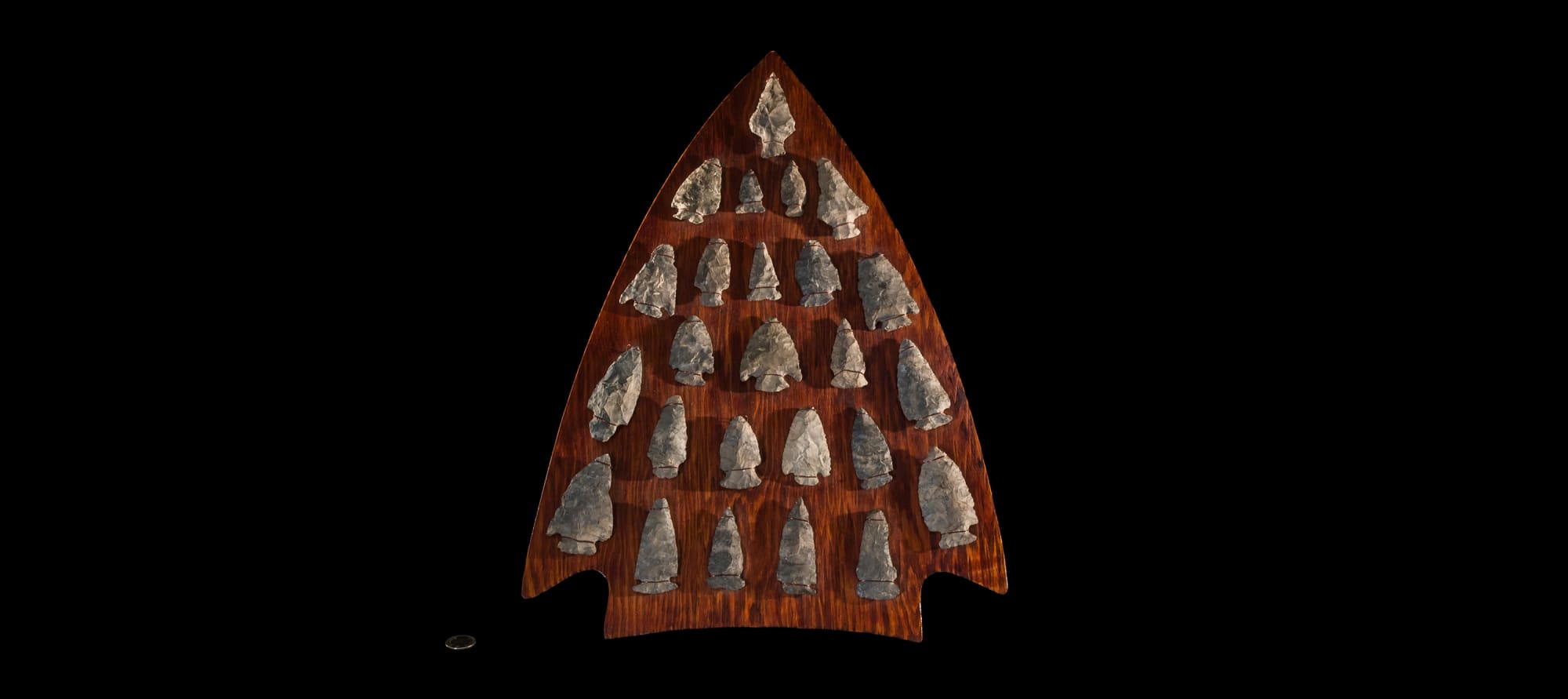
Projectile Point - Hi-Lo Type 004.99.830
Crafted many centuries later than the various fluted point styles that preceded it, this dart point still shows remnants of the earlier styles, including the concave base and the leaf-like outline. Gone is the fluting to help secure the foreshaft. In its place are lateral indentations near the base designed to hold the binding sinew in place. Centuries later, these indentations would become well-defined notches located on the sides or at the basal corners of a projectile point. This specimen is made from Onondaga Formation chert. The stylistic developments in technology hint at changing needs, lifestyles, and priorities as Indigenous peoples adapted to the warming environment. The open spruce parkland of the Late Pleistocene was replaced by a mixed conifer forest and many of the large prey animals either moved northward (caribou) or disappeared completely (mammoth, mastodon). The Great Lakes changed, too, shrinking to much lower levels as the land responded to the retreat of the continental glacier.
 Plywood Arrowhead Plaque
Plywood Arrowhead Plaque
 Copper Sheets and Spearhead
Copper Sheets and Spearhead
 Early and Middle Woodland
Early and Middle Woodland
 Early Archaic
Early Archaic
 Early Paleo
Early Paleo
 Late Archaic and Early Woodland
Late Archaic and Early Woodland